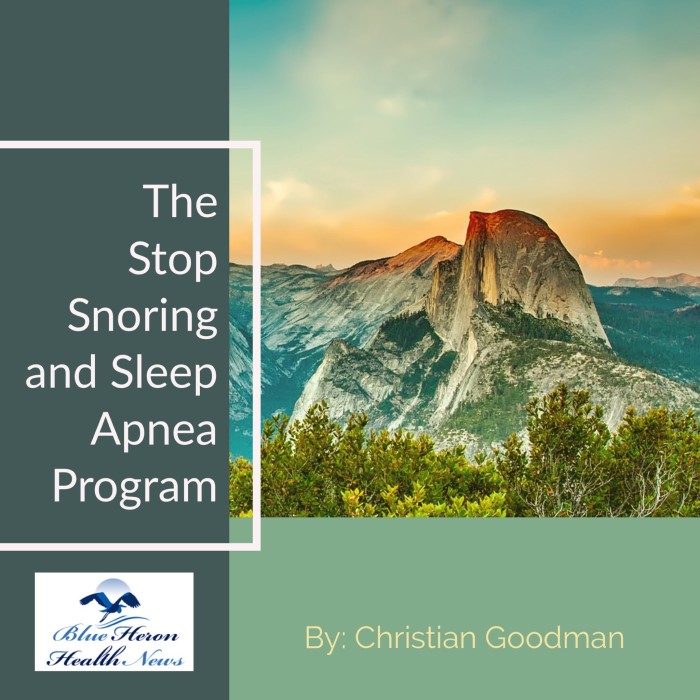
The Stop Snoring And Sleep Apnea Program™ By Christian Goodman f you have been suffering from snoring and sleep apnea and you are looking for permanent, cost effective and natural solution then The Stop Snoring and Sleep Apnea Program will help you. All strategies given have been tested and proven to work.
What is the prevalence of sleep apnea in the USA?
Sleep apnea is a prevalent sleep disorder in the United States, affecting a significant portion of the population. The prevalence varies depending on the specific type of sleep apnea, demographic factors, and the criteria used for diagnosis. Here’s an overview of the prevalence of sleep apnea in the USA:
1. General Prevalence
The overall prevalence of sleep apnea in the United States is influenced by factors such as age, sex, and obesity rates. Estimates suggest:
- Obstructive Sleep Apnea (OSA): OSA is the most common form of sleep apnea. It is estimated that approximately 22 million Americans suffer from sleep apnea, with a significant proportion remaining undiagnosed. The prevalence of OSA varies widely in studies but is generally estimated to be around:
- 2% to 9% in adults aged 30 to 60.
- Higher in older adults, with some estimates suggesting a prevalence rate of over 20% in individuals over the age of 60.
- Mild OSA: Affects around 20% to 30% of men and 10% to 15% of women.
- Moderate to Severe OSA: Affects approximately 9% of women and 24% of men, using criteria of an apnea-hypopnea index (AHI) of 5 or more events per hour with symptoms such as daytime sleepiness, or an AHI of 15 or more events per hour regardless of symptoms.
2. Demographic Variations
A. Age
- The prevalence of sleep apnea increases with age. It is relatively uncommon in children but becomes more prevalent in middle-aged and older adults. The condition is particularly common in individuals over the age of 60.
B. Gender
- Sleep apnea is more common in men than in women, particularly among those who are middle-aged. The male-to-female ratio for OSA is approximately 2:1 to 3:1. However, the risk of OSA increases in women after menopause, potentially due to changes in hormonal levels that affect upper airway stability.
C. Obesity
- Obesity is one of the most significant risk factors for sleep apnea. The prevalence of OSA is higher in individuals with obesity due to the accumulation of fatty tissues around the neck and upper airway, which can obstruct breathing. Approximately 70% of patients with OSA are obese.
3. Other Contributing Factors
A. Ethnicity and Race
- There are ethnic and racial differences in the prevalence of sleep apnea. Studies have shown that OSA may be more prevalent in certain ethnic groups, including African Americans, Asians, and Hispanics, compared to Caucasians. The reasons for these differences are not fully understood but may involve a combination of genetic, anatomical, and socio-economic factors.
B. Socioeconomic Status
- Access to healthcare, awareness of sleep apnea, and treatment availability can vary with socioeconomic status, potentially affecting the prevalence and diagnosis rates in different population groups.
4. Undiagnosed Cases
A significant proportion of individuals with sleep apnea remain undiagnosed. It is estimated that approximately 80% of cases of moderate to severe OSA are undiagnosed. This underdiagnosis may be due to a lack of awareness about the condition, its symptoms being mistaken for other issues (such as simple snoring or insomnia), or a lack of access to diagnostic resources.
5. Trends and Public Health Impact
The prevalence of sleep apnea is expected to increase due to rising obesity rates and an aging population. Sleep apnea is associated with various health risks, including cardiovascular disease, hypertension, diabetes, stroke, and increased mortality. The economic impact of sleep apnea is also significant, considering the costs related to healthcare, loss of productivity, and increased risk of accidents (especially motor vehicle accidents due to drowsy driving).
Conclusion
Sleep apnea is a common disorder in the United States, affecting millions of people across various demographic groups. Obstructive sleep apnea is the most prevalent form, with a higher occurrence in older adults, men, and individuals with obesity. Despite its prevalence, many cases remain undiagnosed and untreated, highlighting the importance of increased awareness, screening, and access to care. Addressing sleep apnea is crucial for improving individual health outcomes and reducing the broader public health burden associated with this condition.
The Stop Snoring And Sleep Apnea Program™ By Christian Goodman f you have been suffering from snoring and sleep apnea and you are looking for permanent, cost effective and natural solution then The Stop Snoring and Sleep Apnea Program will help you. All strategies given have been tested and proven to work.